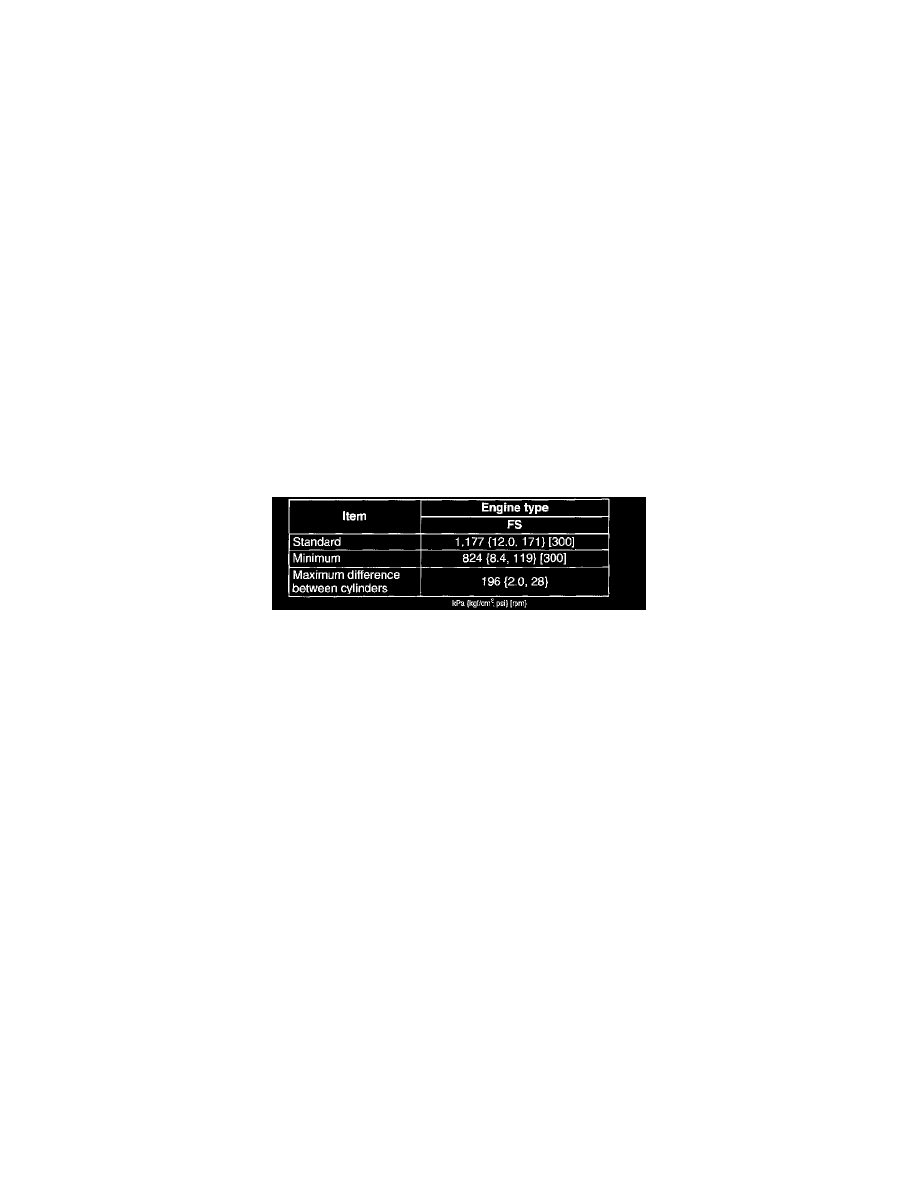Protege DX L4-2.0L DOHC (2002)

Compression Check: Testing and Inspection
COMPRESSION INSPECTION
Warning:
Hot engines and oil can cause severe burns. Be careful not to burn yourself during removal/installation of each component.
1. Verify that the battery is fully charged.
Recharge it if necessary.
2. Warm up the engine to the normal operating temperature.
3. Stop the engine and allow it to cool off for about 10 minutes.
4. Perform "Fuel Line Safety Procedures". Leave the fuel pump relay removed.
5. Remove the ignition coils.
6. Remove the spark plugs.
7. Connect a compression gauge into the No. 1 spark plug hole.
8. Fully depress the accelerator pedal and crank the engine.
9. Note the maximum gauge reading.
10. Inspect each cylinder as above.
If the compression in one or more cylinders is low or the compression difference between cylinders exceeds the maximum, pour a small
amount of clean engine oil into the cylinder and recheck the compression.
-
If the compression increases, the piston, the piston rings, or cylinder wall may be worn and overhaul is required.
-
If the compression stays low, a valve may be stuck or improperly seated and overhaul is required.
-
If the compression in adjacent cylinders stays low, the cylinder head gasket may be damaged or the cylinder head distorted and overhaul is
required.
Compression
1. Disconnect the compression gauge.
2. Install the spark plugs.
Tightening torque 15 - 22 Nm (1.5 - 2.3 kg.m, 11 - 16 ft. lbs.)
3. Connect the ignition coil connector.
4. Install the fuel pump relay.
